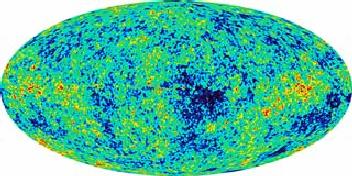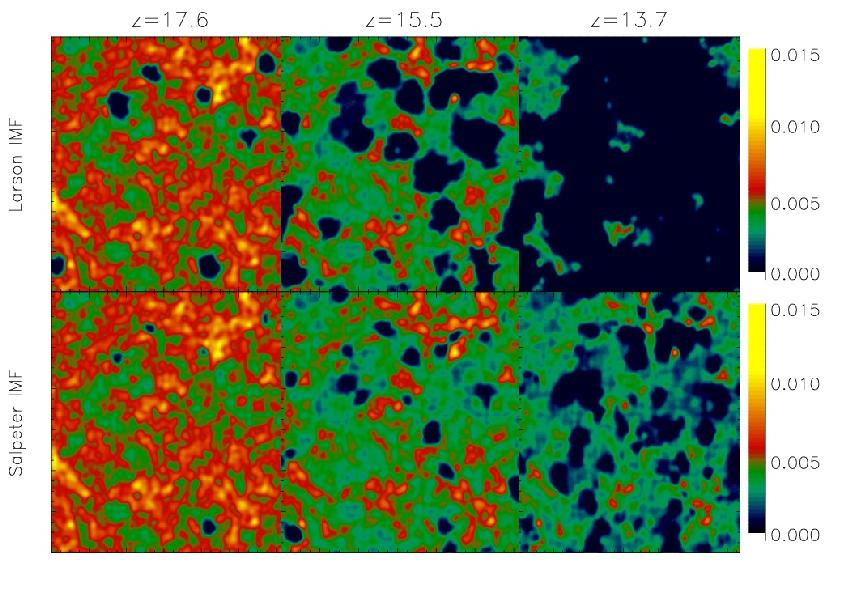|
|
MAY 2 0 0 3 |
|
|
|||
Intergalactic Medium Reionization after WMAP Observations |
|
Researchers at the Max-Planck-Institute for Astrophysics have run high resolution numerical simulations to study the reionization of the Universe and explain the recent measurements by the WMAP satellite. |
|
In the current cosmological framework, the gas in between galaxies (IGM), initially in a highly ionization state, is expected to recombine ~450 thousand years after the Big Bang (the estimated age of the Universe is ~13 billion years) and remain neutral until the first sources of ionizing radiation (primordial stars and, possibly, quasars) form and reionize it (e.g. Loeb & Barkana 2001). Although increasing attention has been given to this topic over the past years, only recently, observations of very distant quasars (e.g. Becker et al. 2001; Fan et al. 2003; White et al. 2003) and of the cosmic microwave background (CMB) radiation (e.g. Kogut et al. 2003; Spergel et al. 2003) are finally allowing quantitative studies of the reionization history. The epoch of complete reionization, t_ion, when more than 99% of the hydrogen present in the IGM is ionized, has still to be firmly established, but the above observations infer t_ion<1 billion years after the Big Bang. In particular, the abundance of electrons measured by the WMAP satellite is higher than previously expected, suggesting an early reionization, most probably t_ion<0.5 billion years. |
 | |
|
|
In order to explain these new observations, researchers at the Max-Planck-Institute for Astrophysics have run high-resolution numerical simulations that follow the formation of galaxies and the propagation into the IGM of the ionizing photons produced by them (Ciardi, Stoehr & White 2003; Ciardi, Ferrara & White 2003). A critical issue for these calculations is the nature of the primordial stars driving the reionization process. Recent works (e.g. Larson 1998; Bromm, Coppi & Larson 1999; Abel, Bryan & Norman 2002) suggest that the first stars were metal-free and massive, resulting in an enhanced ionizing photon production in comparison with more `standard' stars. To study the impact of different star formation recipes on the reionization process, various sets of simulations have been run. In Fig. 2 panels cut through the simulation box show the evolution of the ionized regions (dark) in a case when the formation of massive stars is favored (the so-called Larson initial mass function, IMF; upper panels) and when more `standard' stars are formed (Salpeter IMF; lower panels). As expected, as more ionizing photons are produced with a Larson IMF, reionization proceeds much faster. |
 | |
|
|
These models reproduce the observed amount of electrons. In particular, the Larson IMF case is perfectly consistent with the numbers quoted by the WMAP team, suggesting that the Universe was ionized by an early population of metal-free, moderately massive stars. |
|
The challenge for the future will be to answer questions such as: which are the precise characteristics of the first sources of ionizing radiation? Which is their influence on the subsequent galaxy formation process? How/When/Why does the transition to the kind of stars we see today take place? To answer these questions, and many others, more observations and theoretical work are needed. |
|
|||
|